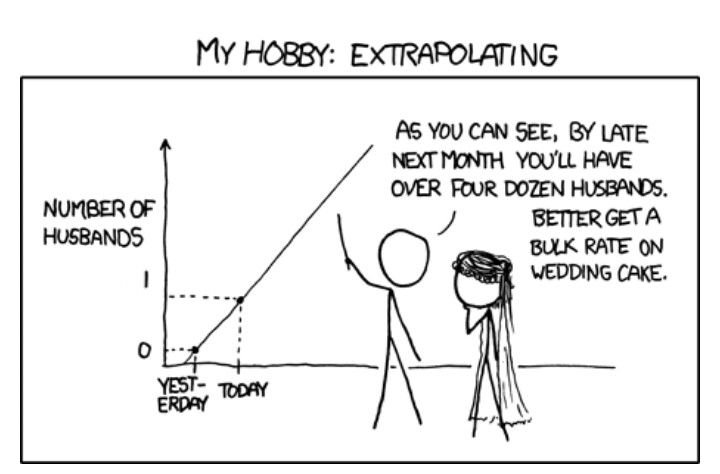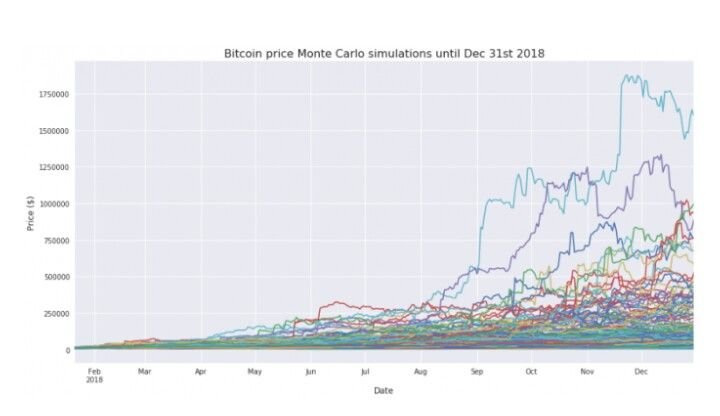Using the Monte Carlo statistical projection method, combined with what are known as random walks, Xoel López Barata developed some pretty fun bitcoin price scenarios for the end of this year. His projections are compelling because he follows data, revealing the difficulty being able to accurately prophesize much about the world’s most popular cryptocurrency’s path.

Monte Carlo Projection Method
Xoel López Barata recently published a pretty great thought experiment. Mr. Barata ran a simulated price projection for all of this year, attempting to figure out just where bitcoin will end in 2018. It is “my opinion and not investment advice,” he urges. And it’s always good to remind readers past performance is no indication of future returns, as life seems to always have other plans.
Mr. Barata used what’s known as a Monte Carlo method. The nerdiest among us will really enjoy following his inputs on Github. He uses daily returns, price variants, but doesn’t assume a normal distribution and instead notes “extreme events have a higher probability of happening.” The Monte Carlo method is usually attributed to a WWII Greek-American scientist Nicholas Metropolis.
Nicholas Metropolis worked with Robert Oppenheimer, Enrico Fermi, and Edward Teller at Los Alamos. There, he delivered a paper said to have simulated liquid numerically. Bitcoin is often compared to water in its resiliency, though is completely unrelated here. Named for its loose relationship to the gambling icon Monte Carlo, the algorithms rely upon random sampling, and appear to have been initially used in mechanical engineering applications.
In finance, however, “we assume that the future behavior of the price of an asset will be similar to its past behavior, and we generate a lot of random versions of that future, called random walks, similar to the past. That’s done taking random samples from the past and stacking them together to build each one of those random walks,” Mr. Barata explains.
Starting with daily returns from 2010 to the present, he plucked random samples, added one to each, multiplying them cumulatively until the end of the year. “Then we multiply the current price of bitcoin times the values of the random walk to get the simulated future prices,” he clarifies. “This will be done a lot of times (100,000 in this case) and at the end of the year we will see the distribution of final price for each random walk.”
He struggles to get much anything concrete, as the prices swing logarithmically from 10,000 USD to as high as 100,000 USD, almost refusing to settle. After generating many more random walks, he finds “the most likely price is somewhere between $24K and $90K,” which is still a pretty wide swing but admittedly closer to something interesting.
He basically offers the distribution’s 50th percentile, which yields 58,843 USD. He then goes with an estimation technique known as Kernel Destiny, ending again above the 50,000 USD price mark. But he’s not satisfied, and explains estimations help us to find possible overall distribution intervals. His numbers reveal an 80 percent price distribution “between $13,200 and $271,277.” And those numbers too seem wildly out of whack, but they do jump off the page. Mr. Barata quickly tampers down excitement by noting this means only “the chance that the price at the end of the year will be below 13,200 is the same as that of it being above $271,277.”
He holds the Kernel Destiny figure above, and tries to find if bitcoin’s price will be lower or equal to its present day level. After plotting, he suggests an almost 10 percent chance by year’s end the price will be equal to or lower than where it sits at the moment (he uses 20 January 2018).
Most sober bitcoiners will take away a mild hope of a 90 percent chance bitcoin’s price will be more than it is today at end of 2018. Considering the last month, that’s at least a positive outlook. For those new to the price projection game, it’s always good to remember that if anyone really could predict that number with any kind of accuracy, bitcoin would’ve more or less ceased to exist — by design it is unknowable. That fact strikes terror in some while being its best feature for others.




Hi! I am a robot. I just upvoted you! I found similar content that readers might be interested in:
https://news.bitcoin.com/bitcoin-2018-price-projection-using-monte-carlo-random-walks-50000-usd/